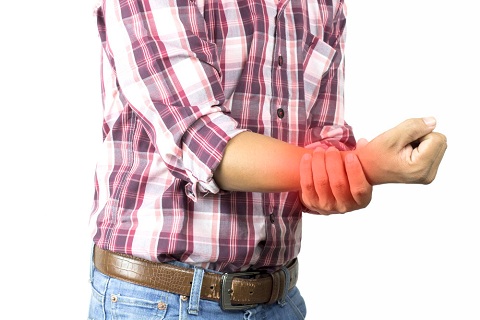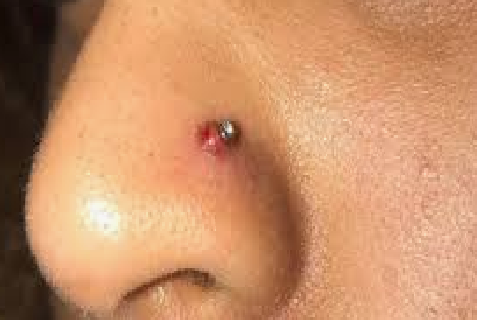Pulled muscles, also known as muscle strains, are common injuries that can occur during physical activities, sports, or even everyday tasks. They range from mild to severe and can cause significant pain and discomfort, affecting one’s ability to move and perform daily activities. Understanding the healing process and timeline is crucial for effective management and recovery. This comprehensive guide explores the duration of healing for pulled muscles, factors influencing recovery time, treatment options, and answers to frequently asked questions.
Healing Time for Pulled Muscles
General Healing Period
The healing time for a pulled muscle varies depending on the severity of the strain:
- Grade I (Mild): Typically heals within 1 to 2 weeks.
- Grade II (Moderate): Can take between 3 to 6 weeks to heal.
- Grade III (Severe): May require several months to heal and often involves surgical intervention.
Detailed Healing Stages
Immediate Post-Injury (0-3 days)
- Symptoms: Pain, swelling, and bruising at the injury site.
- Care: Rest, ice, compression, and elevation (R.I.C.E.) to manage pain and swelling.
Early Healing Phase (3-7 days)
- Symptoms: Reduced swelling and bruising, continued pain and stiffness.
- Care: Gradual introduction of gentle stretching and mobility exercises.
Intermediate Healing Phase (1-3 weeks)
- Symptoms: Decreased pain, improved range of motion, and strength.
- Care: Progressive strengthening exercises and physical therapy if needed.
Late Healing Phase (3 weeks – several months)
- Symptoms: Continued improvement in strength and flexibility, occasional discomfort.
- Care: Return to normal activities with caution, continued strengthening and conditioning.
Factors Affecting Healing Time
- Severity of the Strain: More severe strains take longer to heal.
- Location of the Injury: Some muscles heal faster than others due to their blood supply and function.
- Age and Health Status: Younger individuals and those in good health typically heal faster.
- Treatment and Rehabilitation: Proper care and adherence to rehabilitation protocols can expedite healing.
- Lifestyle Factors: Nutrition, hydration, and overall physical condition influence recovery.
How Pulled Muscles Recover

Recovering from a pulled muscle involves several stages, each crucial for ensuring proper healing and minimizing the risk of re-injury. Here’s an in-depth look at the recovery process:
Initial Stage: Rest and Protection
- Rest: Immediately after a muscle strain, it’s important to rest the affected area. Avoid activities that cause pain or stress on the injured muscle. Resting helps reduce inflammation and prevents further damage.
- Protection: Protect the injured muscle by avoiding movements that might exacerbate the injury. Using supportive devices like braces or wraps can help stabilize the area.
Acute Stage: First 48-72 Hours
- Ice Therapy: Apply ice to the injured area for 15-20 minutes every 1-2 hours during the first 48-72 hours. Ice reduces swelling, inflammation, and pain.
- Compression: Use an elastic bandage or compression wrap to reduce swelling. Ensure the wrap is snug but not too tight to avoid cutting off circulation.
- Elevation: Elevate the injured limb above the level of your heart whenever possible. This helps reduce swelling by allowing fluids to drain away from the injury site.
Subacute Stage: 3-7 Days After Injury
- Heat Therapy: After the initial swelling has decreased (usually after 48-72 hours), you can switch to heat therapy. Applying heat helps increase blood flow to the area, promoting healing and reducing muscle stiffness.
- Gentle Stretching: Begin gentle stretching exercises to maintain flexibility. Stretching should not cause pain; stop if you feel discomfort.
- Gradual Activity: Slowly reintroduce light activities that do not strain the injured muscle. Gradual movement can help prevent stiffness and improve blood circulation.
Rehabilitation Stage: 1-3 Weeks After Injury
- Physical Therapy: Engaging in physical therapy can be highly beneficial. A physical therapist can provide exercises tailored to your injury, focusing on restoring strength, flexibility, and function.
- Strengthening Exercises: Gradually incorporate strengthening exercises to rebuild muscle strength. Start with low-resistance exercises and gradually increase the intensity as the muscle heals.
- Range of Motion Exercises: Perform exercises that improve the range of motion in the affected area. These exercises help restore normal movement patterns and prevent stiffness.
Late Stage: 3-6 Weeks After Injury
- Progressive Strength Training: Continue with progressive strength training exercises. Focus on both the injured muscle and surrounding muscles to ensure balanced recovery.
- Functional Activities: Incorporate functional activities that mimic everyday movements or sports-specific actions. This helps prepare the muscle for a return to normal activities.
- Balance and Coordination: Work on balance and coordination exercises to reduce the risk of re-injury. These exercises help improve neuromuscular control and stability.
Full Recovery: 6 Weeks and Beyond
- Return to Activity: Gradually return to normal activities and sports. Ensure you can perform movements without pain or discomfort before fully resuming strenuous activities.
- Maintenance Exercises: Continue with maintenance exercises to keep the muscles strong and flexible. Regular exercise helps prevent future injuries and promotes overall muscle health.
- Monitor for Symptoms: Pay attention to any signs of discomfort or strain. If you experience pain, stop the activity and consult a healthcare professional if necessary.
Potential Complications

Chronic Pain
- Description: Persistent pain beyond the expected healing period.
- Management: May require physical therapy, pain management strategies, and possibly further medical evaluation.
Re-Injury
- Description: High risk of re-injury if the muscle has not fully healed.
- Prevention: Gradual return to activities, continued strengthening, and flexibility exercises.
Scar Tissue Formation
- Description: Excessive scar tissue can limit flexibility and strength.
- Management: Physical therapy techniques such as massage and stretching to break down scar tissue.
When to See a Doctor for a Pulled Muscle

Knowing when to seek medical attention for a pulled muscle is crucial for ensuring proper care and a swift recovery. Here are some key indicators that it’s time to consult a healthcare professional:
Severe Pain and Swelling
If you experience intense pain and significant swelling immediately after the injury, it could be a sign of a severe muscle strain or another serious condition. Immediate medical evaluation is necessary to rule out other injuries such as fractures or ligament tears.
Inability to Use the Muscle
If you cannot move the affected muscle, bear weight on it, or perform usual activities, it’s important to see a doctor. This could indicate a more severe strain or a complete muscle tear that requires specialized treatment.
Visible Deformity
Noticeable deformity in the muscle, such as a lump or gap under the skin, suggests a severe muscle tear. Medical intervention is needed to assess the extent of the injury and determine the appropriate course of action.
Persistent Symptoms
If pain, swelling, or bruising does not improve within a few days despite rest and home care, or if symptoms persist beyond a few weeks, it’s time to consult a healthcare provider. Persistent symptoms may indicate complications or the need for a more intensive treatment plan.
Numbness or Tingling
Experiencing numbness, tingling, or loss of sensation around the injured area could signal nerve involvement. Prompt medical attention is necessary to prevent long-term nerve damage.
Fever and Redness
If you develop a fever or notice increasing redness and warmth around the injured muscle, it could be a sign of infection. Seek medical care immediately to address the infection and prevent it from spreading.
Recurrent Injuries
Frequent muscle strains in the same area may indicate an underlying issue that needs medical assessment. A healthcare professional can help identify and address the root cause to prevent future injuries.
Inadequate Improvement with Home Treatment
If your condition is not improving with standard home treatments like rest, ice, compression, and elevation (R.I.C.E), it’s advisable to get a professional evaluation. A doctor can provide additional treatment options and tailor a rehabilitation plan to aid recovery.
Frequently Asked Questions (FAQs) about Pulled Muscle
Common signs include sudden pain, swelling, bruising, weakness, and difficulty moving the affected muscle. A popping or snapping sensation may also be felt at the time of injury.
It is crucial to rest the injured muscle initially. Gradual, gentle exercises can be introduced as pain decreases, but avoid activities that cause pain or stress to the muscle until fully healed.
Adhering to R.I.C.E. principles immediately after injury, following a structured rehabilitation program, maintaining proper nutrition and hydration, and avoiding activities that can exacerbate the injury will aid in faster recovery.
Most muscle strains heal without long-term effects if managed properly. However, severe strains or inadequate rehabilitation can lead to chronic pain, weakness, and susceptibility to re-injury.
Conclusion
Pulled muscles, though common, require appropriate care and time to heal fully. Understanding the healing process, adhering to recommended treatment protocols, and preventing re-injury through proper techniques and lifestyle choices are crucial for a complete recovery. Most muscle strains heal within a few weeks to several months, depending on the severity of the injury and individual factors. If you experience persistent pain or complications, seek medical advice to ensure optimal healing and recovery.





